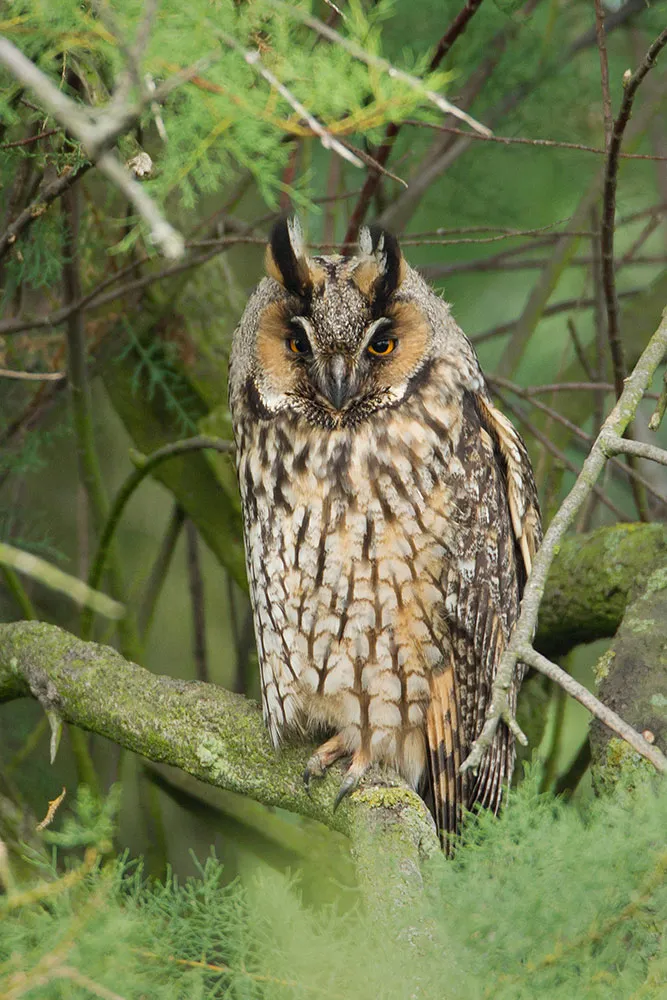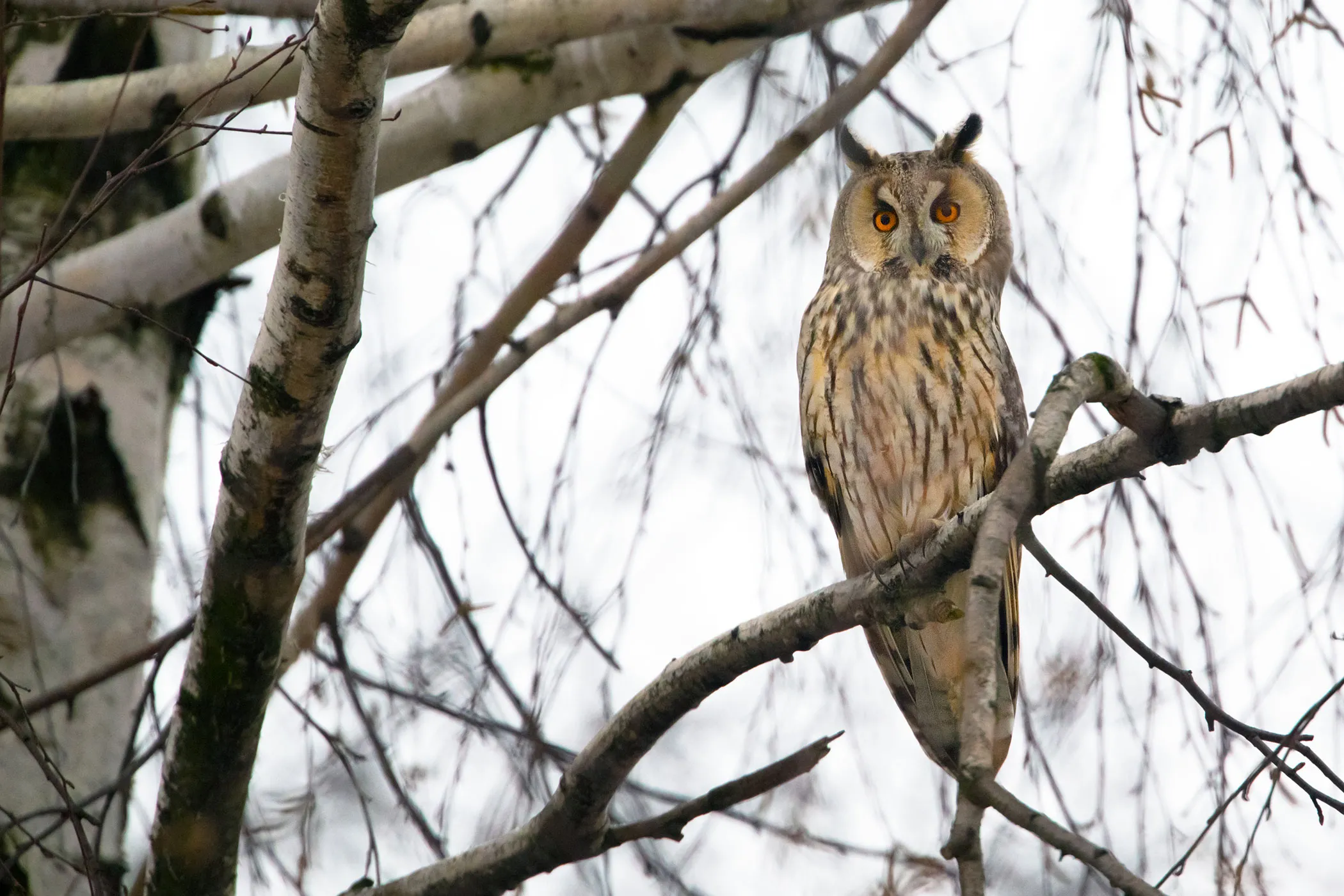Introducing Long-eared Owls
Scientific name: Asio otus
- Breeds in coniferous woodland and tall scrub.
- Resident birds are joined by birds from Scandinavia in winter.
- Approximately 3,500 breeding pairs in the UK.
- Green-listed Bird of Conservation Concern.
Long-eared Owls are associated with coniferous woodland and tall scrubby habitats during the breeding season, favouring sites with dense nesting cover and nearby open areas for hunting. Although widely distributed, this owl is a scarce breeding species and one that is easy to overlook.
Long-eared Owls seem to be more abundant in Ireland than the Britain, perhaps because of reduced competition with Tawny Owls, which are absent from Ireland.

Calls and identification
The territorial call of the male is a soft ‘hoo’, reminiscent of the sound made when blowing across the top of a milk bottle. Although this call may be far-carrying, it can be difficult to pick out at a distance. The phrase is repeated every 2-3 seconds, beginning rather weakly but becoming stronger as the series of calls develops. Displaying individuals may bring their wings together during flight to generate a soft clapping sound. Young Long-eared Owls beg for food by using a sharp squeaking whistle, reminiscent of a squeaky gate.
Listen to a male territorial call
Listen to wing clapping and flight calls
Listen to a calling youngster
This is a medium-sized owl, slightly smaller and slimmer in appearance than a Tawny Owl. The main confusion species is Short-eared Owl and BTO has produced a useful video on how to identify the two species.
When perched, or when the Long-eared Owl’s ear tufts are visible, the species can be readily separated from the Short-eared Owl. At other times, eye colour is useful: those of Long-eared Owls are yellow-orange, while in Short-eared Owls they are yellow.
The general appearance of the upperside of the wing in Short-eared Owl is of sharp contrast between the dark wing tip and the extensive pale panel that sits between this and the darker ‘carpel’ patch. In Long-eared this panel is more richly-coloured and less obvious.
Ecology and conservation
The Long-eared Owl usually adopts the old stick nest of another species (often a crow or Magpie) for its nest but may occasionally nest on the ground, at the base of a tree or under a bush. Although pairs defend a breeding territory they often forage over a much larger area; one Scottish study recorded birds foraging at distances of over 2.5 km from the nest in years of low vole abundance. Long-eared Owls advertise their occupancy of a territory from late January, with a peak in calling behaviour during February and early March. Although UK breeders may retain a territory throughout the year, they usually occupy a new nest site each season, typically situated within a short distance of the one used the previous year.
This is the most nocturnal of the British owls and individuals are seldom seen hunting during daylight hours. Field Vole appears to be the most important prey species for British Long-eared Owls, with Wood Mouse, Bank Vole and Common Rat of secondary importance. Wood Mouse and Common Rat are the most important small mammal prey species for Long-eared Owls in Ireland. Small birds become more important for Long-eared Owls outside of the breeding season, with finches, buntings and thrushes presumably take from their overnight roosts.
Our wintering population of Long-eared Owls includes both birds that have bred here and others that have arrived from Fennoscandia, eastern Europe and Russia. Male Long-eared Owls tend to remain further north than females during autumn and winter, a behaviour that sees unequal sex ratios, heavily biased towards females, in the birds caught at British bird observatories on autumn migration or found dead here during winter.
Life history
- Clutch Size 3 – 4 eggs
- Incubation period 28 days
- Fledging age 29 – 34 days
- First clutch laid March – April
- Number of broods per year 1 (rarely 2)
- Age at first breeding 1 year
- Typical lifespan 4 years
- Maximum age from ringing 12 years, 10 months, 12 days, (set in 1987)
Knowledge gaps and our work
Our knowledge of UK Long-eared Owls is largely limited to the information collected through periodic national Atlas studies, a small amount of nest monitoring and several short-term local studies. The Long-eared Owl is a good contender for the least understood widespread breeding species in Britain.
BTO work
Through Project Owl we would like to undertake a pilot study to answer some questions on habitat use by Long-eared Owls, and to examine other determinants of occurrence/breeding success. This work should lead to a better survey design, raising the prospect of a national survey.
